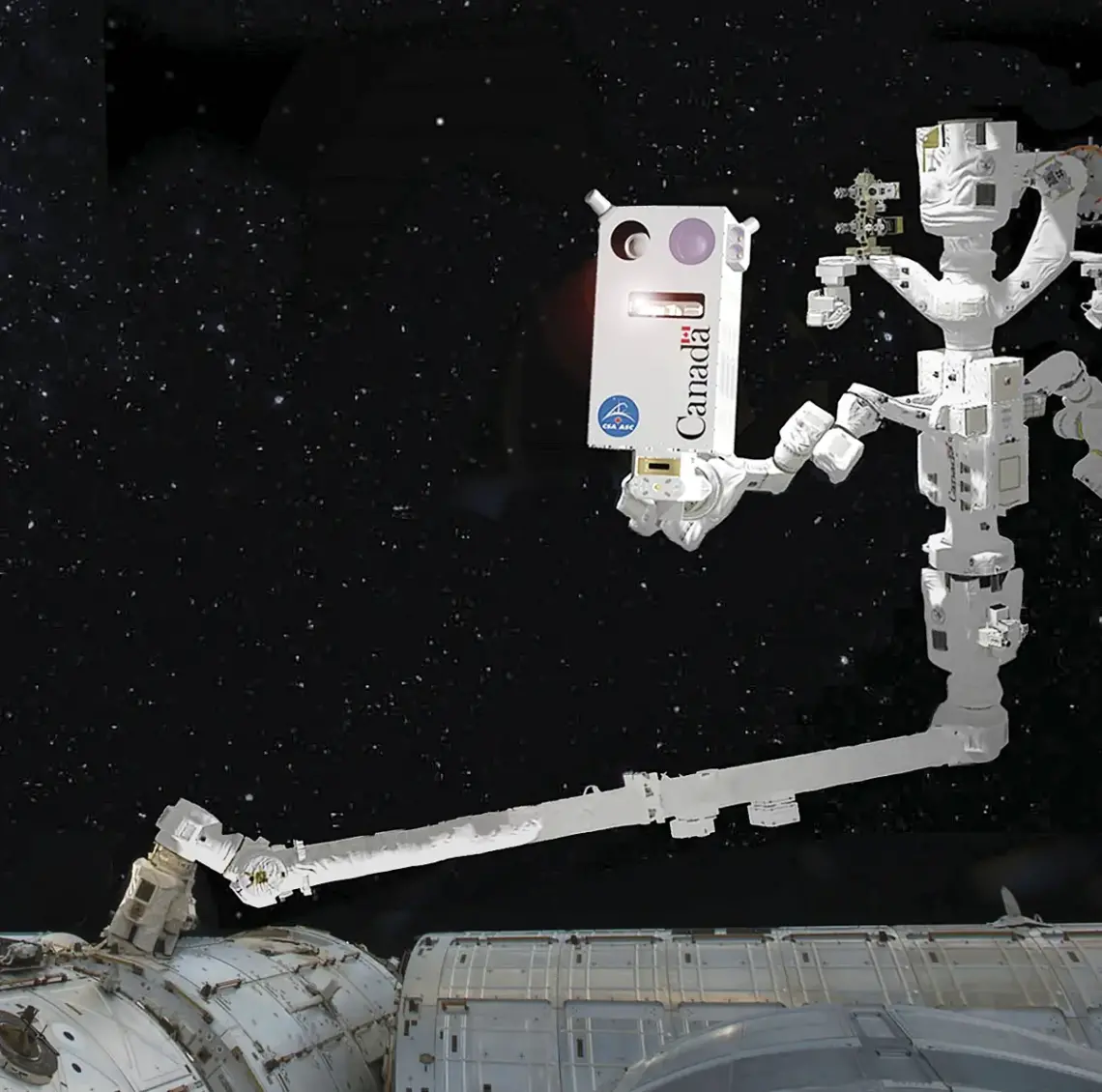
By Rosa Saba
Technology developed by Neptec Design Group has long been a fixture on the International Space Station and shuttles. Now, armed with millions of dollars in new contracts from the Canadian Space Agency (CSA), the Kanata firm is developing a new generation of cameras and sensors to help researchers push the boundaries of their work.
Neptec, which provides vision systems for space, industrial and military use, was recently awarded several CSA contracts that highlight the agency’s interest in increasing automation both on the space station and in future space missions.
Neptec’s largest new contract began its preliminary design phase in September 2017. The $11.9-million project will combine three existing Neptec technologies to form a new vision system, called the Dextre Deployable Vision System (DDVS), for the International Space Station (ISS).
According to Brad Jones, director of mission and mobility systems at Neptec, the vision system’s main task on the ISS will be to inspect the exterior of the station in far greater detail and at more regular intervals than current inspections. It will be integrated with Dextre, a Canadian robot currently used to monitor and repair the station.
“We will get pictures of the ISS like we’ve never seen before,” explains Stéphane Desjardins, manager of projects and programs at the CSA, adding astronauts will no longer perform the potentially dangerous inspections themselves.
The vision system will combine three of Neptec’s existing technologies: a high-resolution video camera, a thermal night vision camera, and LiDAR – a 3D laser sensor.
The vision system can also be used to monitor incoming spacecraft. LiDAR can track incoming craft beyond one kilometre and detect sub-millimetre damage. It’s currently used as part of Neptec’s TriDAR system on the ISS’ Cygnus resupply craft. Without relying on reference markers, the sensor develops a 3D image of incoming craft regardless of orientation.

Jones says the DDVS will also be used to evaluate how similar systems could be applied in other ways, including for deep-space missions.
“The international community, led by NASA, is already looking at a gateway space station that would be much further from the earth than the ISS is now,” says Jones. The sensor suite could be used not only for maintenance, but also in the assembly of the station.
According to Desjardins, the DDVS represents a necessary next step in the space sector’s move toward automation.
“If you want to increase the autonomy, the first thing you need to invest (in is) the vision system,” says Desjardins.
Optical networks in space
Also in the works at Neptec is another move toward automation, and Jones’ main project.
Neptec once provided a space vision system used on the space station and a long-retired shuttle called the Advanced Vision Unit (AVU) processing platform. The setup is now redundant, says Jones, and recently the CSA and NASA have shown interest in reusing the hardware capabilities of the AVU in a way that would enable more autonomy for the Mobile Servicing System, the team of robots that includes Dextre.
“Right now, when they use the manipulator system, it requires either someone on the station sitting at a manipulator workstation, or it can be configured to allow the manipulation of the arm through a ground operator,” says Jones. “What the agency is aspiring to do here is to basically demonstrate that the manipulations system can be made more autonomous.”
In addition to the vision system, Neptec was awarded three smaller contracts in April 2018 totalling almost $1.8 million.
The first contract is to develop a miniature 3D camera to help rovers navigate with more autonomy, enabling more efficient and accurate collection of data. Rovers would be equipped with forward-facing and rear-facing cameras.

The second contract is a partnership with Thales Alenia Space Switzerland, the Institute for Quantum Computing, and McMaster University to build upon Neptec’s expertise in optical subsystem design and create an optical communications system – essentially, to enable the transfer of large amounts of data between satellites and Earth, improving bandwidth, accuracy and security.
Neptec’s optical technology, like LiDAR or their metrology systems, involves minute control over the pointing of a laser, and has developed to the point where Jones says it could be used to reliably transfer data much more securely than current radio wave technology allows.
New frontiers
The third contract, at first glance, might not seem up Neptec’s alley. However, like the other projects, it aims to use the company’s existing technologies. Neptec – which is headquartered in Kanata North and has corporate roots dating back to 1990 – is aiding in the development of a cell culture system to study the impacts of micro- and zero-gravity as well as radiation on the human body.
According to Perry Johnson-Green, chief scientist of life sciences and ISS utilization at the CSA, the agency currently performs studies on humans who have been to space, but wants to take that research further.
“We know quite a bit about … the physical risks and the psychological risks of being in space,” says Johnson-Green. “But there’s still a tremendous amount that we don’t know.”
Johnson-Green says though the symptoms are often clear – loss of bone structure, decreased muscle mass and power, among others – it’s the causes that remain less known. By studying these effects at the molecular level, the agency hopes to identify possible treatments and preventions for the negative effects space travel can have on the human body.
So, why Neptec? The company’s expertise in optical systems was key to their proposal, says Johnson-Green. A cell culture system being taken into space would need a container with extremely accurate monitoring capabilities to ensure its pH and oxygen remained at the necessary levels.
Johnson-Green says the technology could also benefit research on Earth in other sectors.
The 2018 contracts were awarded as part of the CSA’s Space Technology Development Program, intended to support innovation in the Canadian space industry and further research for future space missions.
